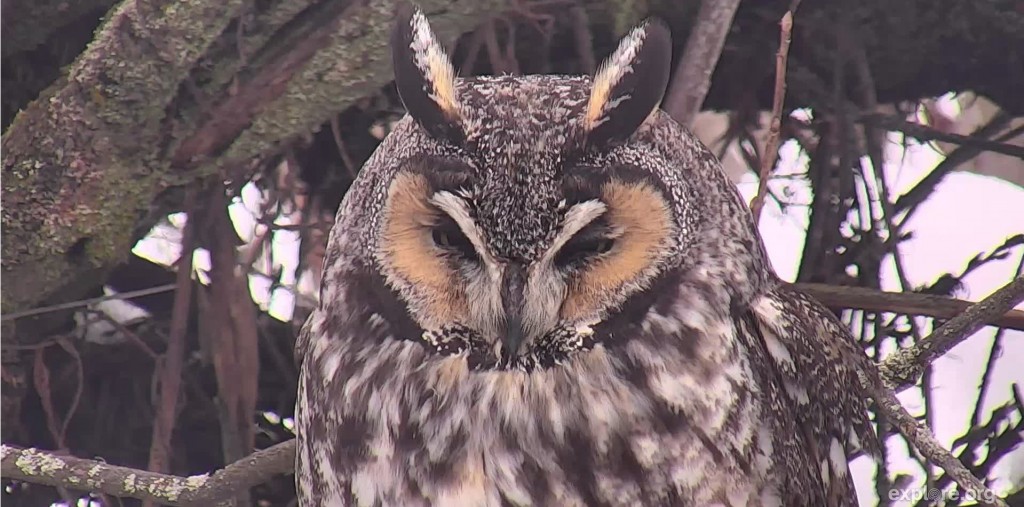Calling all owl lovers! We’ve got a special live chat with Owl Research Institute on January 30th at 1 pm PT/ 4 pm ET! ORI will spend some talking about the roost cam and why having it is especially important to researchers as well as the general public. Not only does this cam give researchers a peek into LEO behavior, but it also helps them understand their roles within their communities as well as how roosting pertains to reproduction.
So post your questions for Denver Holt below! We look forward to learning more about these fascinating birds! When we go live you can watch on the Long-Eared Owl Cam here!
Information about their Long-eared Owl research:
We began the Long-eared Owl study in western Montana in 1987. The initial research question was to determine if communal roosts of Long-eared Owls were comprised of family groups, other related individuals, or non-related individuals.
Long-eared Owls are one of only a few species of owls in the world that aggregate during the non-breeding season to form communal roosts. In Montana, this is usually during autumn and winter. At times, they also nest in close proximity – but do not fit the definition of colonial nesters.
Since the study began, a host of other questions arose, as happens in most studies. These were simple research questions such as: clutch size, hatching success, fledging success, food habits, nest-site characteristics, winter roost-site characteristics, molt, migration, and more. Even our DNA and other molecular studies, although interesting, are simple descriptive questions. Through 30 years of Long-eared Owl research, we have banded over 1,900 individuals and found over 225 nests.
We achieved many of our objectives and answered several original questions. For example, we now know that winter communal groups of these owls rarely comprise members of the same family.
We developed a quantitative technique to discern plumage color differences between males and females.
We also unraveled the long-term mating system and determined that the owls were seasonally monogamous, but life-long polygynous. We quantified stress hormones, which allowed us to evaluate or research impact on these owls.
Overall, however, we are most proud of our long-term data on our local populations, which indicated Long-eared Owl numbers are declining. We are unsure of the factors influencing this and are presently trying to generate interest from other states and groups to conduct more widespread monitoring for this species.



